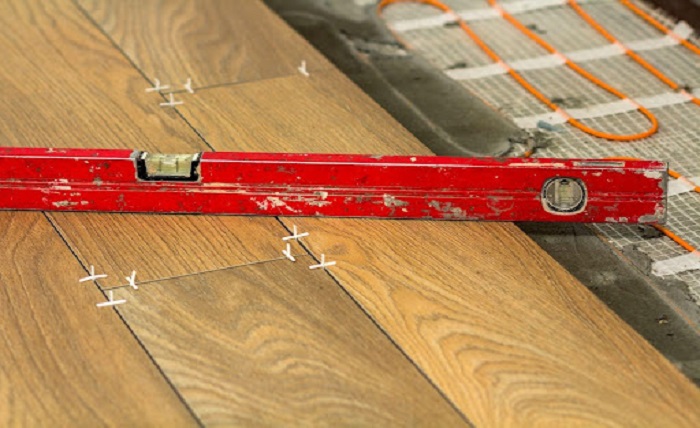
Of all the steps involved in repairing or refinishing wooden floors, one of the most easily overlooked but vital to overall longevity is good gap filling. Gaps between floorboards can look insignificant at first sight but can actually compromise the structural integrity of an entire floor in the long run. Effective gap filling, well executed, doesn’t just add looks — it adds strength, prevents movement, and assists in protecting the entire flooring system from damage. For homeowners and professionals alike, understanding how and why this works and finding the right floor restoration company can be the key to a beautiful but fragile floor or a floor that will last a lifetime.
Understanding How Gaps Impact Wooden Flooring
Due to its natural tendency to compress and expand, wood adapts to changes in temperature and humidity. The natural movement over time can result in gaps between floorboards, particularly in older buildings or those with less regulated interior climates. Although there will always be some movement, neglected gaps could become problematic.
Gaps allow dust, dirt, and water to seep in between boards, leading to swelling, rotting, or even infestation by insects. More critically, gaps reduce the interlocking rigidity between planks. When several boards loosen or shift, the entire floor loses its rigidity, causing the floor to creak, develop uneven flooring, and feel unstable when walked on. Proper gap filling keeps such boards tight so that they function as one single, solid, cohesive surface once more.
Why Skilled Gap Filling Makes Floors Stronger
Gap filling is not about appearance — it’s a method of structural reinforcement. Professionals use fillers and techniques that not only fill the visible gaps but also support the joint between two boards. Done correctly, gap filling loads weight and pressure uniformly across the floor. This prevents individual boards from sagging or being elevated by foot traffic, so the flooring is solid and quiet.
A well-filled floor also provides a weather proof barrier. The filler acts as a barrier that does not allow moisture to penetrate, one of the primary causes of warping and moulding. Essentially, professional gap filling forms a layer of strength, allowing for the soundness of the subfloor and the boards themselves to remain intact for many years to come.
The Value of Professional Knowledge
Gap filling seems easy but requires precision and expertise to be able to give structural stability. A professional can look at the condition of the floor, determine what is causing the gaps, and choose the appropriate material. Filler that was not applied correctly can sink, crack, or pop out, contributing to the instability. Meanwhile, every board is firmly attached to its next one following a job well done. Once filled, trained laborers also employ special tools and sanding procedures to level the top, creating it even and smooth prior to applying a finish coat or sealant.
Their technique ensures that the filler is integrated into flooring without leaving any seams, imparting both durability and visual consistency to it. In addition, by correcting issues like loose nails, unevenness on the subfloor, or moisture imbalance before filling, experts actually reinforce the entire system rather than camouflaging surface irregularities.
Gap filling, well done, not only maintains stability at the moment, but also prevents future problems. An air-tight floor keeps moisture out, which means less risk of expansion and contraction cycles that could open up gaps again. In addition, with fewer cavities for dirt and debris to settle into, the boards remain in their proper position longer. Ongoing maintenance, such as keeping indoor humidity levels constant and sanding lightly as required, also increases the lifespan of the floor structure. In most cases, properly filled and properly cared for wooden floors will happily live several decades without needing extensive restoration treatments.
The Long-Term Benefits of Proper Gap Filling
Other than the technical assistance, professional gap filling has a few other advantages. It provides better insulation, which muffles the draughts that can escape in the type of open joints. This maintains the indoor temperature more pleasant, especially in older properties with suspended timber floors. A properly filled floor is also easier to clean, with no joints where dirt or insects can accumulate.
Most importantly, the aesthetic result is breathtaking — the surface appears continuous, smooth, and professionally crafted. This aesthetic improvement is in collaboration with the structural benefits, leading to homeowners with a floor that is not just resilient but also stunning.
Isolating structural integrity with intensely skilled gap-filling processes is one of the most important procedures in restoring and maintaining wood flooring. It combines artistry, materials science, and precision to restore compromised, uneven floors into a unified, durable surface. With beauty and function in mind, master craftsmen ensure that natural wood’s splendor is matched by the durability that exists beneath. A properly filled and sanded floor does more than simply appear wonderful — it stands its ground, resists abuse, and welcomes every step for years to come. In the hands of a great craftsman, gap filling is no longer mere maintenance; it’s restoration of balance, toughness, and timeless craftsmanship.




